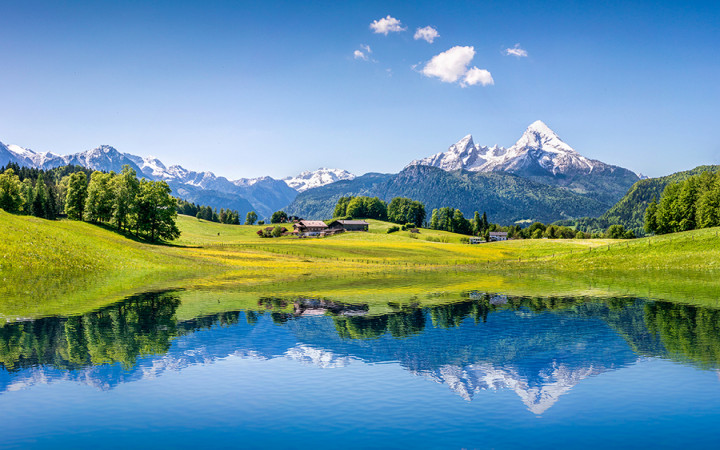Have you ever had the urge to climb a mountain? People who love nature and the great outdoors often dream of scaling scenic mountains. The view and sense of accomplishment that meet you at the summit can't be beat!
If you live in Asia, the Himalayas might call your name. People in South America might be drawn to the Andes. Thousands of climbers in North America are lured to the Rockies each year.
What about Europeans? There's an set of peaks that beckon to them. What are we talking about? The Alps, of course!
The Alps stretch roughly 700 miles in a crescent shape across southern and central Europe, north of the Mediterranean Sea. Beginning near Monaco on the coastline of southern France, the Alps extend through Switzerland, northern Italy, Germany, Austria, Slovenia, Croatia, Bosnia and Herzegovina, Serbia, and Montenegro, before ending on the coastline of the Adriatic Sea in Albania.
In total, the Alps cover about 80,000 square miles (207,000 square kilometers). Alpine peaks are the source of many major European rivers, including the Rhône, the Rhine, the Po, and many tributaries of the Danube. Waters from the Alps ultimately feed into the North, Mediterranean, Adriatic, and Black seas.
Given their location, the Alps have a great impact on the climate of Europe. Not only do the Alps separate the marine climate of Western Europe from the Mediterranean and Balkan climates, they also produce their own unique climates based upon their elevations and locations with respect to European weather fronts that move from west to east.
Most Alpine peaks reach heights between 6,000-8,000 feet (1,829-2,438 meters), although there are many that exceed 10,000 feet (3,048 meters). The tallest peak, Mont Blanc, reaches a height of 15,782 feet (4,810 meters). Other famous peaks in the Alps include the Matterhorn, the Jungfrau, and the Eiger.
The Alps are considered the birthplace of mountaineering, which is sometimes locally known as "alpinism." In addition to mountain climbing, tourists flock to the Alps every year for a variety of fun activities, including skiing, tobogganing, and hiking.
The Alps were born about 55 million years ago when the tectonic plates underlying the continents of Africa and Europe collided. This collision resulted in upthrusting of rock to form the mountain range. Scientists believe the Alps reached their greatest heights millions of years ago and that they're no longer growing as a result of tectonic processes.
Swiss geodesists, however, routinely measure the height of the Alps with great precision, and they've determined that the mountain summits rise by about one millimeter each year. Instead of plate tectonics, though, they believe the continued growth of the Alps is a result of strong climatic variations that have existed over the past 2.5 million years.
So will the Alps eventually grow to be as tall as the Himalayas? Nope! Researchers have learned that, as the Alps rise, they're also being finely eroded by wind, water, glaciers, and rock fall at almost exactly the same rate, which will keep them at roughly the same height for the foreseeable future.





